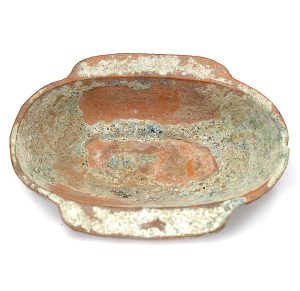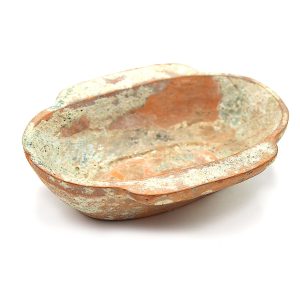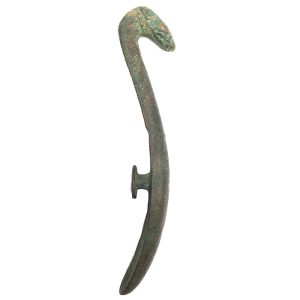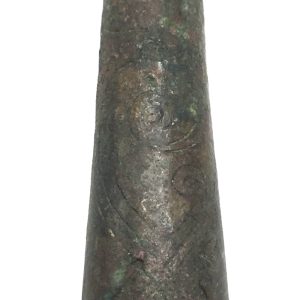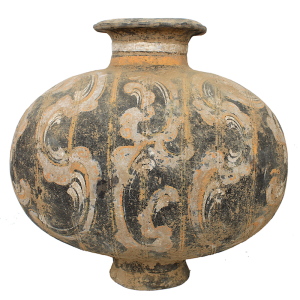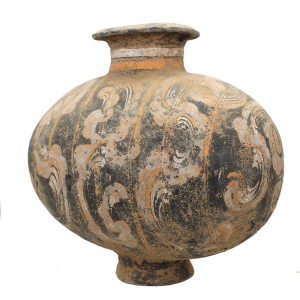-
Sale!


$450.00 Original price was: $450.00.$310.00Current price is: $310.00.
H: 1.5″ W: 5.125 ” D: 3.875 ” | FREE SHIPPING WITHIN CONTINENTAL U.S.!
Used for rituals and ceremonies, lead green glazed earthenware wing cups were popular burial objects. The tomb’s humidity caused the lead to oxidize to a lustrous, prized iridescent, silver-green.
-
Sale!


$395.00 Original price was: $395.00.$305.00Current price is: $305.00.
H: 2.5″ W: 4.5″ D: 2.375″ | FREE SHIPPING WITHIN CONTINENTAL U.S.!
This diminutive mingqi pig is totally charming and fanciful with an iridescent glaze and would be especially appealing as a send off for the deceased to the nether world or in a contemporary setting. Pigs were especially prized and images were often included as items the deceased would need to live comfortably in the after life.
-


$485.00
H: 4.1″ W: 1 ” D:.625 ” | FREE SHIPPING WITHIN CONTINENTAL U.S.!
In the Han, belt hooks became a symbol of wealth, high status and power hung vertically from belt holes used in life and buried with the deceased for his journey to the afterlife . Ornamented with incised decoration this beautiful piece is dragon shaped with beautiful verdigris deposits.
-
Sale!


$2,100.00 Original price was: $2,100.00.$1,700.00Current price is: $1,700.00.
H: 11.75” W: 12.25” CALL 213-568-3030 OR EMAIL [email protected] FOR SHIPPING.
Families placed cocoon jars with auspicious designs containing magical mixtures of mulberry leaves in tombs for souls of the departed to drink for a transformative afterlife. Ovoid shaped, it rests on a trumpet-shaped foot decorated with elegant cloud scrolls and circular “eye” motifs.
End of content
End of content

